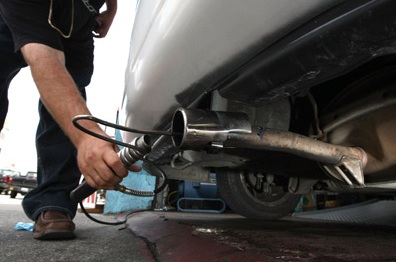
Much has been written about the differences between these two fuel delivery systems, and for good reason. It basically denoted the separation of technicians when fuel injection came along. Usually, especially at that time, technology moved forward but it didn’t move quite as fast as it does now. When fuel injection came out, it was so much of a leap forward that some technicians made the decision to retire early as opposed to learning a whole new delivery system. No need to be afraid, electrics have proven themselves. Those technicians who chose to leave early instead of staying on to learn made a mistake. I’m about to show you how.
There’s always two sides to every story: the pros and the cons. Fuel injection is superior to carburetion in many ways. Here are three. Better MPG, fewer emissions and better uphill/downhill performance. With fuel injection the adjustment potential is vastly greater than carburetion because EFI is not limited by physical parameters. In order to adjust the air/fuel ratio on a carburetor you have to disassemble it and change an orifice called a “jet.” Even then you’re only tuning for the time frame the car is in the MAJORITY of the time. A fully warmed car, driving at the speed it will be used the most is absolutely acceptable – provided you don’t care how it runs when cold, the time of year it is or if you’ve taken a trip in which you’ve traveled up or down in elevation.
With EFI the computer is constantly measuring and adjusting the air/fuel ratio. Constantly. Driving through the mountains? Measuring and adjusting. Cold start on a cold day? Measuring and adjusting. The computer doesn’t have to know where you are, or what you’re doing. It just needs to measure the exhaust, and adjust accordingly.

Emissions – the “E” word. Just as EFI will enable the engine to run better across the board, it also enables the engine to run cleaner. Think of it this way: the engine is going to get a certain amount of fuel no matter what with a carburetor (without being too technical), but it may not need it all. Perhaps it doesn’t need quite as much fuel at idle in July as it does in January. No matter, it’s tuned to run in the cold. Who wants a cantankerous engine when it’s cold? We want it to run so that we can have heat sooner, right? This equates to over fueling in in July. The carburetor doesn’t “know” anything. The temp, altitude, in all facets of its range of operation it’s set to do one thing. It doesn’t even know what engine it’s on. It’s readily apparent that a system which can monitor itself will easily defeat one that can’t. Don’t all businesses inventory themselves? If not, they won’t be around long.
Uphill and downhill. I picked this because I am an avid over lander. When four wheeling, the pitch of the vehicle is much greater than, say, highway driving. With a carburetor, you’re limited to the float bowl. Much like the flush valve in your toilet, when the float bowl fills up, it pushes a needle into a seat in order to stop the influx of fuel. Now, go pick your toilet tank up and jostle it around as it would be in the back of your truck when four wheeling.

See?
With EFI, there is no worry. You have 43 psi of fuel at the ready constantly, and the injector is monitored by the computer, which is monitoring the exhaust. Adjusting, constantly adjusting.
The biggest knock on EFI, or at least in the beginning, was that it was electric. This is very telling. Basically, what it denotes is, that we in the automotive industry were staffing people who couldn’t repair electronics. Electricity is funny, because you can’t see it. With electrics came a whole new bloodline of technicians. Eager, and willing to learn. It restructured the automotive business from the bottom to the top for the better. It helped us “clean house” and “drop dead weight” if you will. We have EFI to thank for that.
